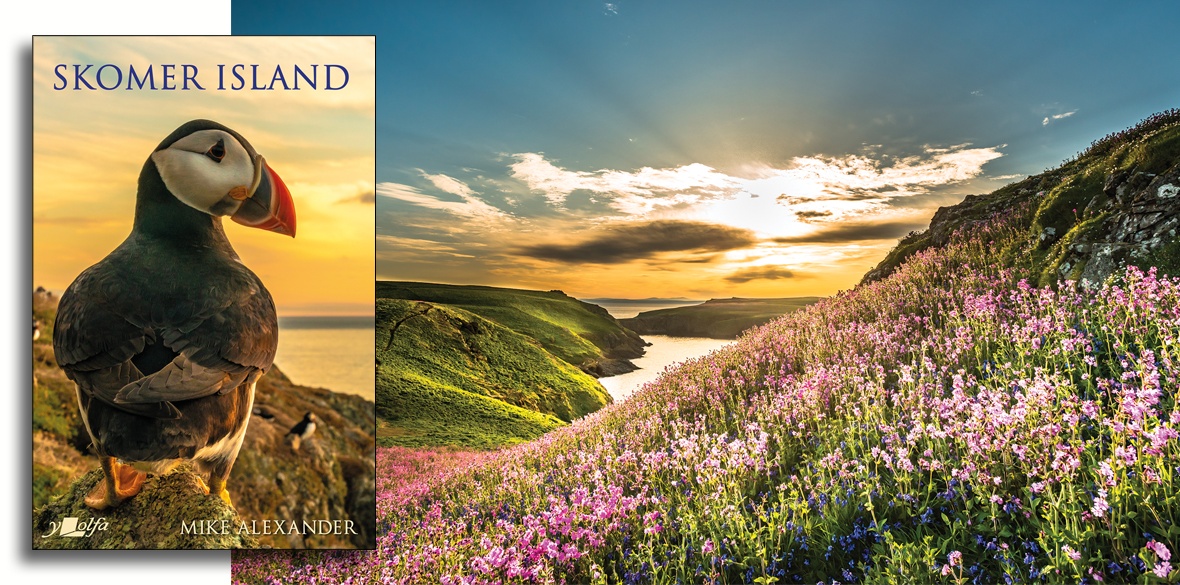This is the last article you can read this month
You can read more article this month
You can read more articles this month
Sorry your limit is up for this month
Reset on:
Please help support the Morning Star by subscribing here
Skomer Island
by Mike Alexander
(Y Llolfa, £29.99)
APART from Norway and Greenland, the British Isles stand out in Europe in having large expanses of cliff-lined coastline. This has resulted in the development of a rich and special fauna and flora, where visitors from around the world walk and enjoy its scenery and birdlife.
Skomer, only a short boat trip from the Pembrokeshire coast, typifies this coastal characteristic but has the additional attraction of being an island. Mike Alexander, this book’s author, was warden there from 1976-1986.
Only 3.2 kilometres in size, Skomer offers rich rewards for anyone interested in wildlife and wild open vistas. It lies at the southernmost tip of St Bride’s Bay, facing the full force of the ocean, and if you stand on Skomer Head looking south-west, there is no land between you and Venezuela — 6,906 km away on the other side of the Atlantic.
Skomer is a rugged and sometimes intimidating island, a plateau of hard and unyielding rock separated from the mainland by a narrow strait. Although volcanic rocks are dominant on Skomer, they are interbedded with sedimentary rocks, softer and more vulnerable, and their erosion has formed the Wick and both Havens on the island.
The island was occupied by humans, certainly after the last ice age, and relics of that habitation are still visible today in old field boundaries, dry-stone walls, enclosures and hut circles and Skomer is exceptional, perhaps unique, in the British Isles in the completeness of its archaeological remains. They record the lifestyle and activities of prehistoric farming communities who lived and died on the island between 2,000 and 5,000 years ago.
Other areas of Britain, like Stonehenge and Avebury, contain more spectacular monuments but mostly lack context. It is the beauty of Skomer that entire prehistoric landscapes are preserved.
The author takes us on a tour, beginning with the island’s geological prehistory, through to its more recent history, followed by separate chapters on its birds, seal population and vegetation.
Those chapters devoted to the island’s human history contain fascinating stories and, for the more recent period, archive photos of the families who lived and worked on the island. They relate Skomer’s human history from the earliest times to 1960 — the people who owned it, lived on it, farmed it, changed it, cherished it and protected it.
June 15 1959 marked the most significant change for Skomer, with the island declared a National Nature Reserve. From then on, it has been owned by the nation and managed by the Wildlife Trust of Wales on its behalf to conserve the wildlife.
But it also remains a place for people, which they can visit and experience first-hand. Previously restricted to a few, that experience became available to anyone who wanted to share in it, providing of course they respect the supremacy of nature.
Skomer became a success story because over the past 60 years, the dedicated staff and willing volunteers, supported by trust members, have taken such good care of the island. A succession of wardens has lived and worked there and their long-term commitment to recording, monitoring and study has produced an exemplary account of the island’s wildlife.
This new, in-depth and highly informative portrait of the island has been written by an expert who knows Skomer intimately and it will almost certainly become the definitive book on the subject.
Superbly illustrated, with stunning colour photographs by the author, it’s a treat for anyone interested in the history of the British Isles and its wildlife.










